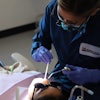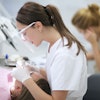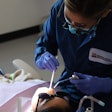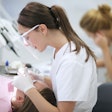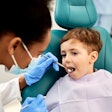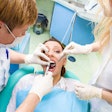A new report assessing the economic viability of services provided by practicing midlevel dental providers in the U.S. shows that they are expanding preventive dental care to children and those who can't afford care.
The report was released May 14 by Community Catalyst, a nonprofit advocacy organization that focuses on the U.S. health system. Conducted by Frances M. Kim, DDS, DrPH, a general dentist and public health researcher, it details the types of procedures that practicing dental therapists in the U.S. perform, the amount of money they generate in relation to the type of procedure and the population they are able to serve.
Dr. Kim examined data regarding productivity of dental therapists and dental health aide therapists (DHATs) from four employers in Alaska and Minnesota. The study findings are based on data from August 2011 through December 2012 for eight DHATs and six dental therapists, two of whom are dually licensed dental hygienists/dental therapists.
Dr. Kim found that midlevel dental providers currently practicing in Alaska and Minnesota cost their employers 27% and 29%, respectively, of the revenue they generate. In addition, nearly 85% of the care the dental therapists provide is routine and preventive; filling cavities represented approximately one-quarter of their work.
Here are some other key findings from the report:
The majority of services dental therapists provided (32.8%) were preventive; sealants (44%) and fluoride varnishes (43%) were the most common preventive services.
Less than a quarter (23.7%) of the care dental therapists provided was restorative, and extractions represented just a fraction of care (3.8%).
Restorative procedures represent the majority of revenue (46.7%) dental therapists generate. Preventive procedures account for 20.5% of revenue, despite the fact that they are the most commonly performed procedures.
Dental therapists primarily treat children, low-income adults, Native Americans, and those who would not otherwise have access to dental care. In Minnesota, 78% of dental therapists' patients were publicly insured, and most were younger than age 21. In Alaska, 66% of patients served by dental therapists were younger than 21.

